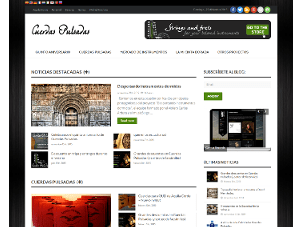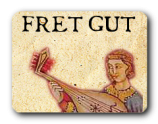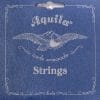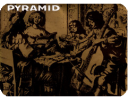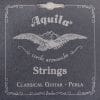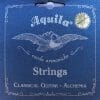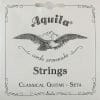Today we have the pleasure of sharing an interview with the musicologist Gracia María Gil < / a>, with whom I was fortunate to begin my studies of plucked string a few years ago in Salamanca, under the guidance of Rafael Muñoz.
After returning from her stay at the University of Melbourne (where she has been completing her studies with John Griffiths), Gracia is facing the final stretch of her doctoral thesis on Enríquez de Valderrábano and giving some didactic talks about her specialty in various places.
Gracia is trained as a guitarist at the Professional Conservatory of Music in Valladolid and at the Superior “ Manuel Castillo ” in Seville. His interest in research in the repertoire of early music led him to study Musicology at the University of Valladolid.
As an interpreter, he has received master classes from professors Ricardo Gallén, Rafael Muñoz, Jesús Sánchez and Manuel Minguillón. He belongs to the Dolce Tormento Ancient Music group and the Ancient Music Group of the University of Valladolid. He collaborates with the Il Gentil Lauro Group, with whom he has recorded the album “ Diversitá di cose ” and accompanies with the lute and the baroque guitar in the Renaissance and Baroque dance courses.
He currently carries out his work as Research Staff at the University of Valladolid and completes his training as an interpreter studying Plucked String Instruments of the Renaissance and Baroque at the Integrated Music Center of El Escorial, with Professor Ramiro Morales.
Grace, as we have indicated, your doctoral thesis revolves around the vihuelist Enríquez de Valderrábano, what are the main objectives of your thesis and why did you choose this vihuelist? My priority and longer term objective is the publication of a critical edition of “ Silva de Sirenas ”, the music book in figures that Enríquez de Valderrábano published in Valladolid in 1547. Emilio Pujol carried out a study in 1965, with the intention of including all the pieces contained in the book divided into two volumes, but for reasons that we do not know he published only the first. Therefore, an edition with modern transcription criteria, a critical apparatus, comments on the different copies is necessary … a profound musicological work. And I dedicate my time to that. This publication will come true as soon as I submit my doctoral thesis, presumably in the first quarter of 2015. Enríquez de Valderrábano is the most mysterious of the vihuelists. In addition to the fact that biographically we do not have enough information to be able to draw a line of his life, his music has not yet been studied in depth and it was necessary to get on with it. My co-director, John Griffiths, made me see it, that’s why I chose him.As a student of his work, what do you think are the most striking or peculiar features that characterize Valderrábano’s work?To begin with, “ Silva de Sirenas ” occupies the second place, in terms of its length, of all vihuela books since it contains 171 pieces, after “ Orphenica Lyra ”By Miguel de Fuenllana, containing 182. His music contains some characteristic features that make Valderrábano one of the most original: The famous pieces for two vihuelas (Book IV), for example, are unique in vihuelistic production and are edited in such a way that both players can play it from the sides. opposite of the table.As a vocal polyphony “ adapter ”, Valderrábano is very faithful and in no case does he change the conduction of the voices because the execution difficulty is high. However, in original compositions for vihuela, such as fantasías (Book V), it does not follow a predictable compositional pattern. It introduces the themes in an original way and the developments do not stick to the imitative counterpoints that one might expect. The sonnets contained in book VI are very short pieces with no similarities in the rest of the books by other vihuelists. They seem like simple melodies, some taken from other authors, treated in a similar way to fantasies, but without their size or complexity. These are the most striking characteristics, although there are obviously many other peculiarities in his work.
In recent months you have been giving various talks, where you present the fruit of your research work and the relevance of the figure of Valderrábano, what is the approach you are pursuing with these conferences?The fundamental objective of these conferences is to unite the musicological work with the interpretive one, since I consider that they are two complementary and necessary disciplines. My education since I was a child has been as a performer, but, aware of the necessary musicological work that still needs to be done in the field of the vihuela, I decided to expand it with research, although never losing sight of the ultimate goal, which is for the music to play. That is why another of the purposes of the conferences is to discover the figure of Valderrábano and his music and that it is increasingly programmed by the plucked string musicians. The lectures are aimed at interpreters of any discipline, musicologists and, in general, at any person interested in 16th century music, whether in academic fields or not. Any topic can be interesting: pedagogy in vihuela books, genres preferred by vihuelists, modern transcription of music in figure, adaptations of vocal music for vihuela, sources, theorists …Your last lecture, for example, was focused on the pedagogical aspects found in vihuela books, does that pedagogy differ a lot from current plucked string teaching methods? Depending on what aspects, in general I think so. The prologues of all the vihuela books and the most important theoretical treatises of the time such as Bermudo, “ Declaration of musical instruments “, (Osuna, 1555) and Tomás de Sta María, “ Art of Fantasy Tañer ”, (Valladolid, 1565), provide all the necessary information that a student should handle before sitting down to play an instrument.Current interpreters do not We are very accustomed to reading the prologues of the books that include the pieces that we play, thereby obviating the necessary details that the author has captured and that would greatly simplify the execution. That is assuming that we read directly from the sources and not from any edition posted on the net. Nowadays, we also do not have the practice in “ organ singing ” (polyphony) or “ plain singing ” (monody), which was required for a student to start playing … so we have had to adapt the teaching methods to modern times … but any time is good to practice it!
What are your next projects?The next conference will be given at the International Academy of Early Music , in Burgos. (July 2014), on “ Pedagogy in vihuela books ”. Here you can see the poster for that same conference given last March at the “Arturo Soria” conservatory in Madrid.I am also planning to publish in Hispanica Lyra, the magazine of the Sociedad de la Vihuela , an article entitled “ The transmission of secular music in the 16th century. A look through Silva de Sirenas ”. In addition, I have scheduled a Concert for plucked string and voice with works by Tomás Luis de Victoria and unpublished works by Enríquez de Valderrábano together with Jesús Fernández Baena, tenor Javier Centeno and soprano Lorena Agustí, within the framework of the 5th Centenary of the birth of Santa Teresa.
Thank you very much for your collaboration, Grace and we hope that very soon we can see your work edited as it deserves.

